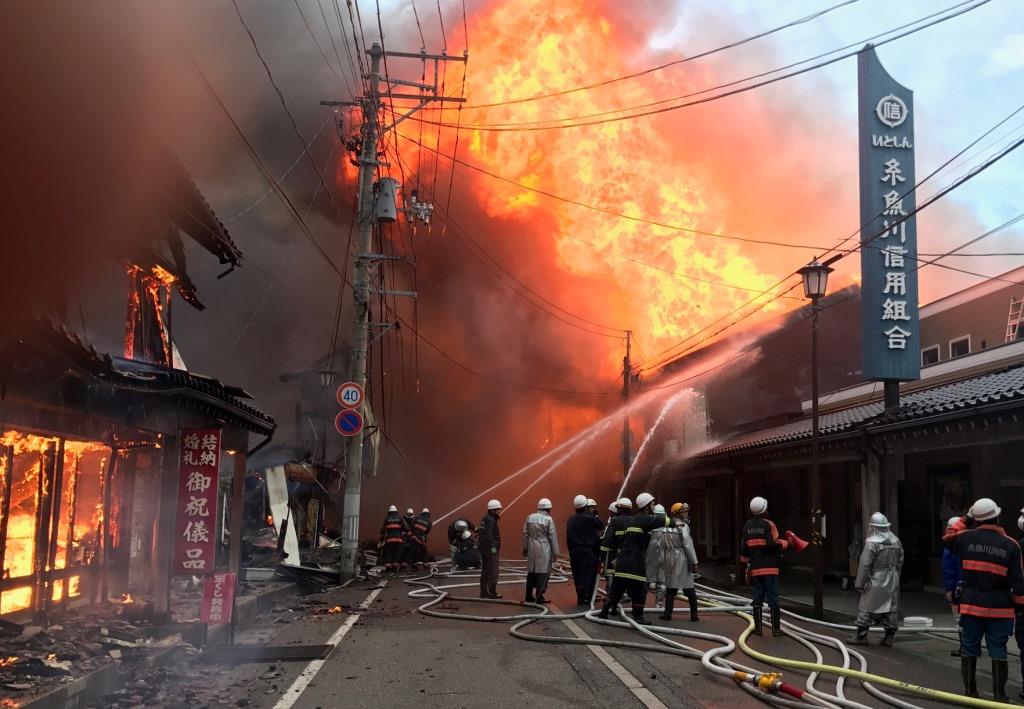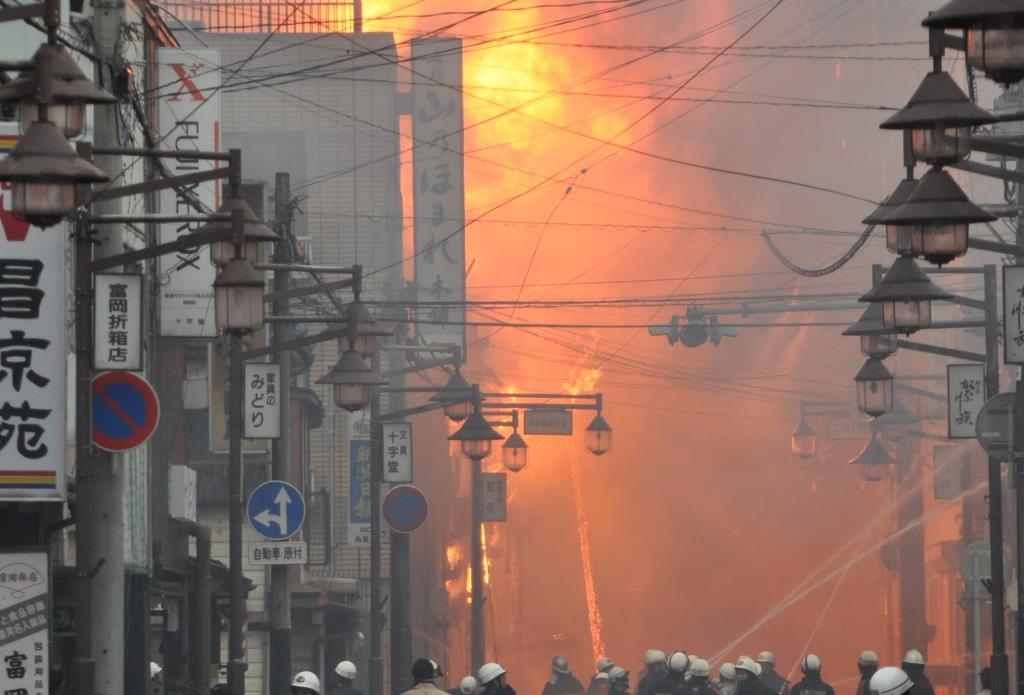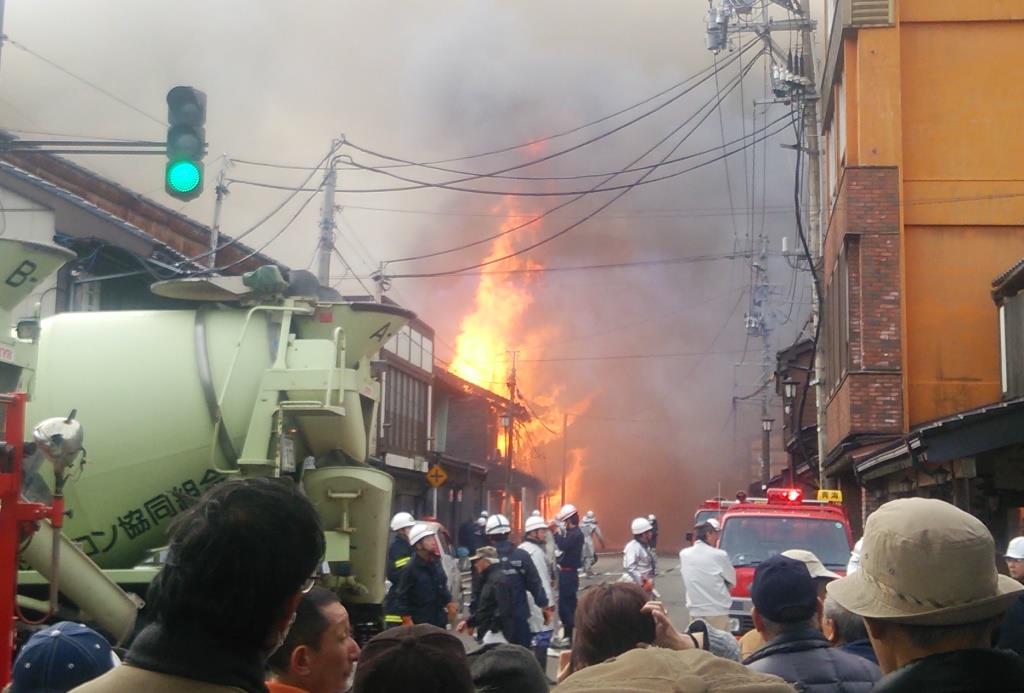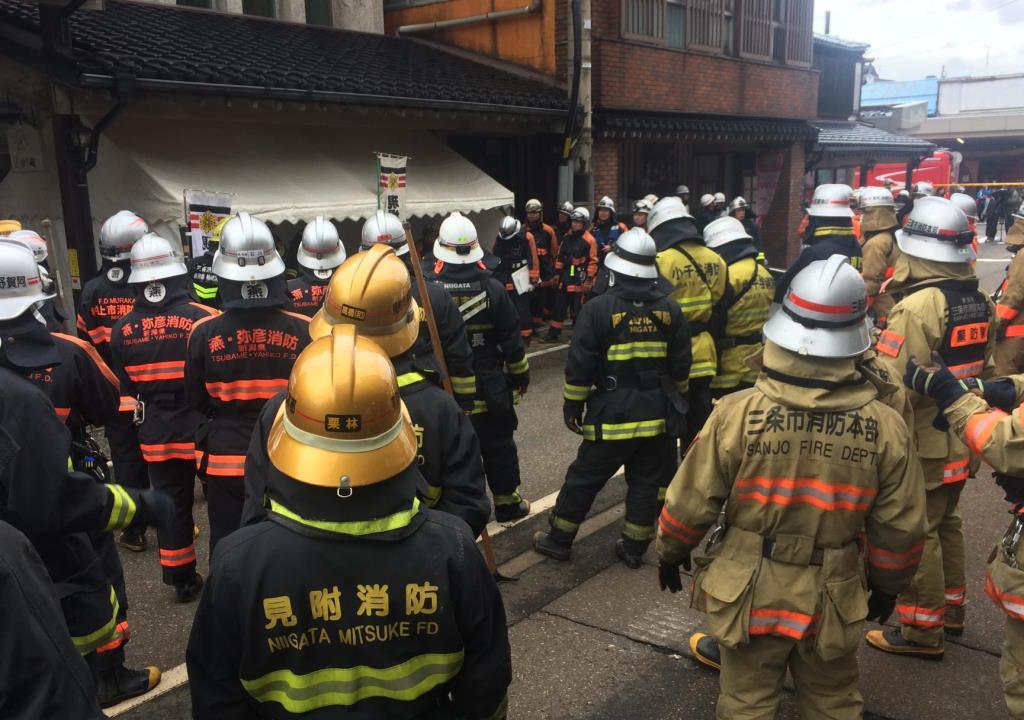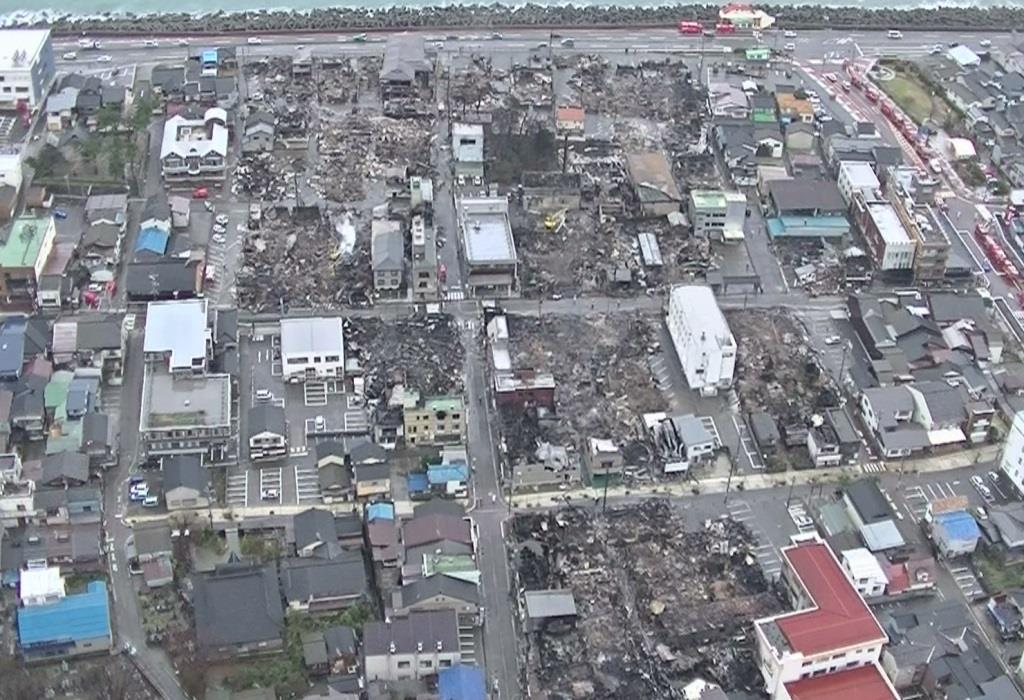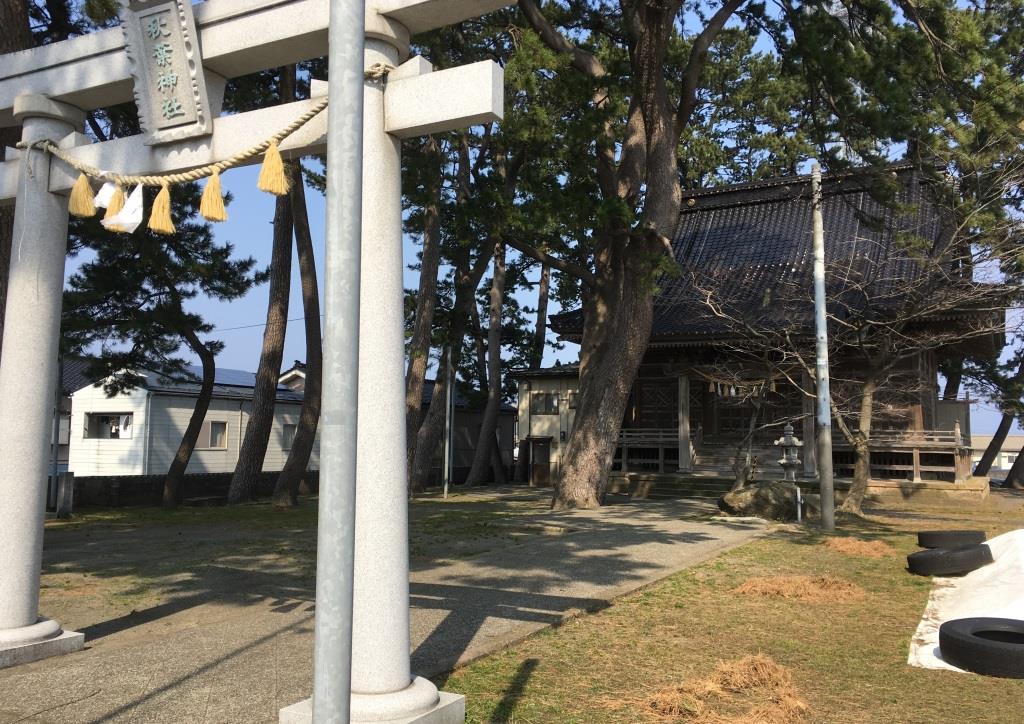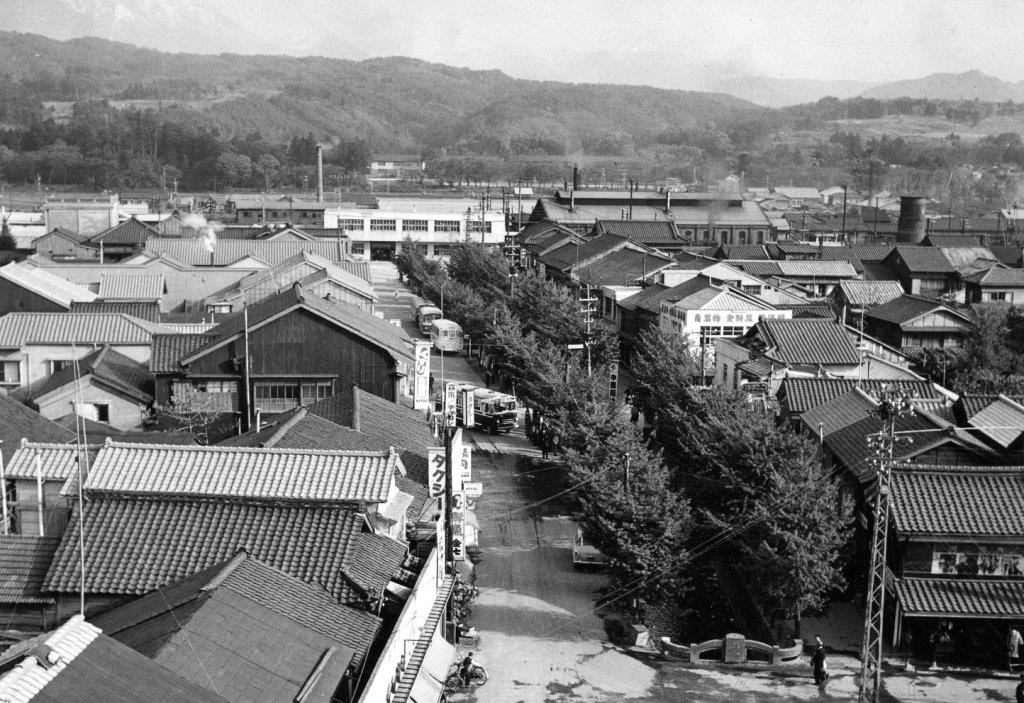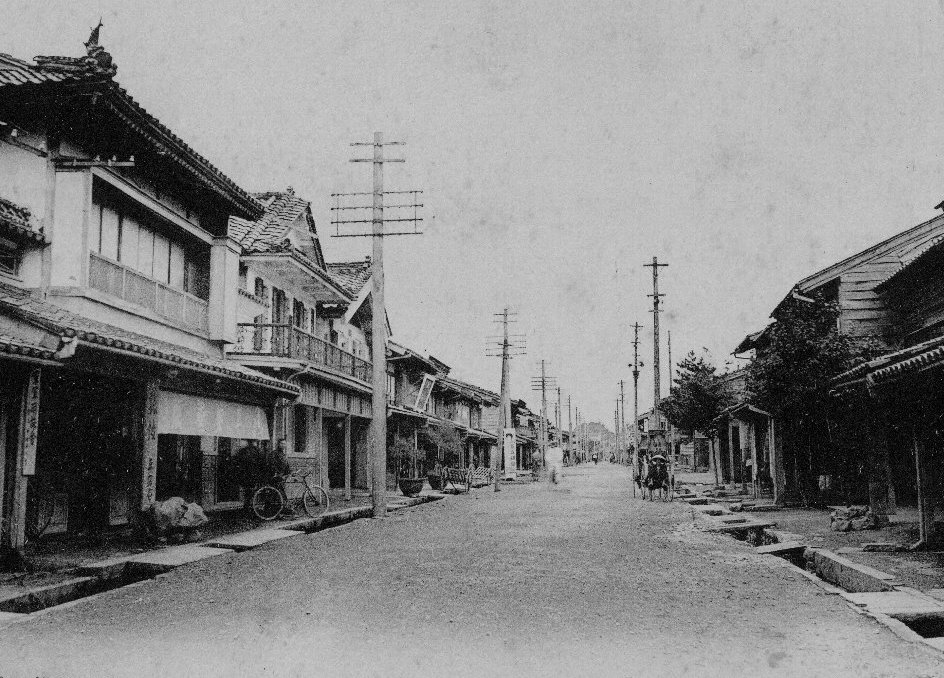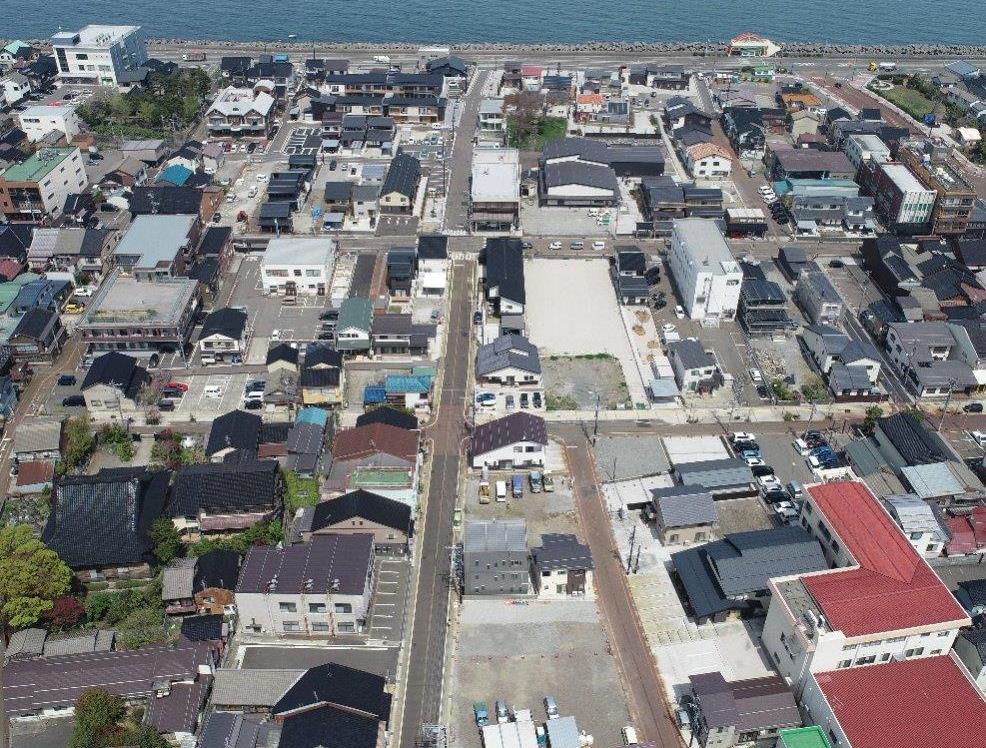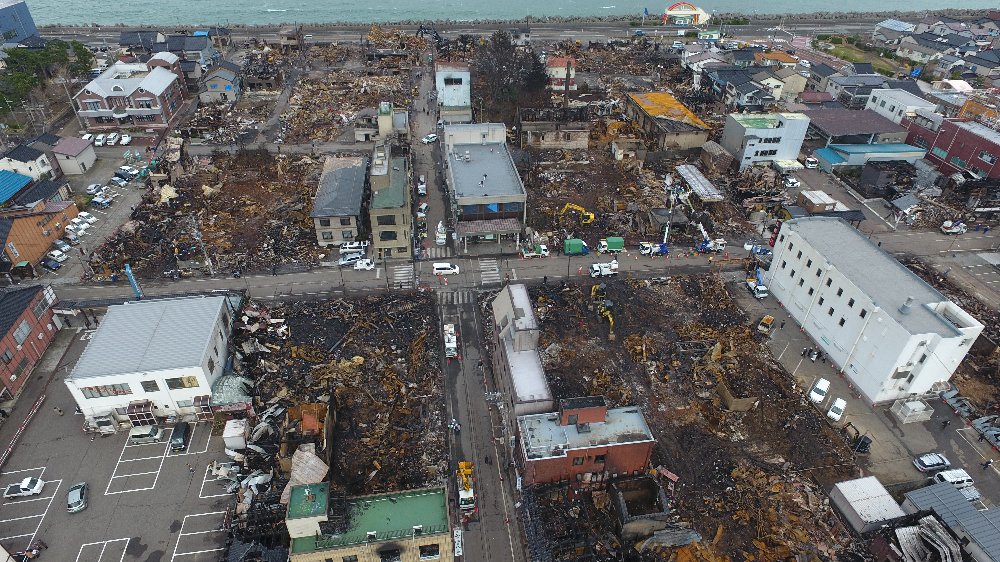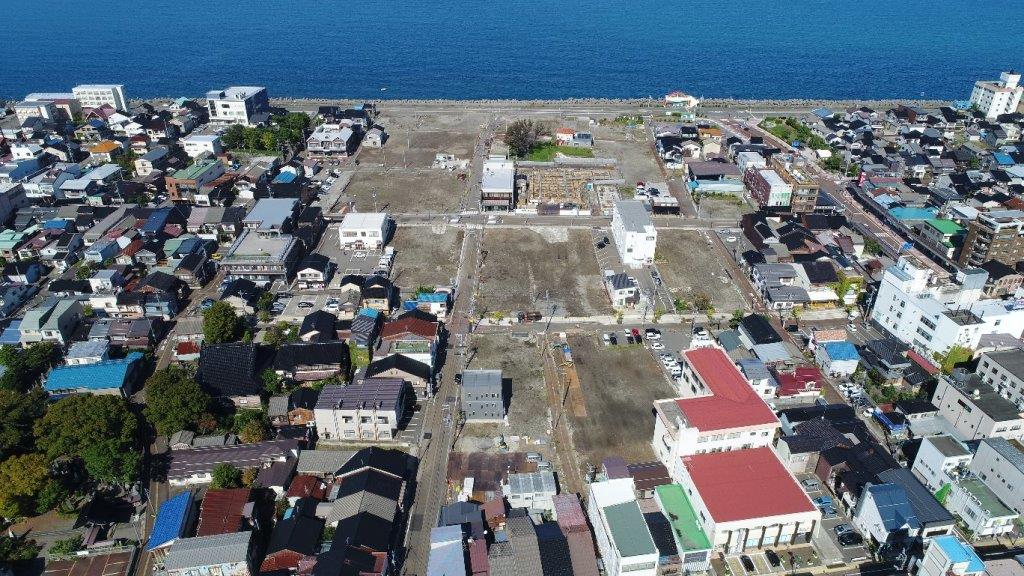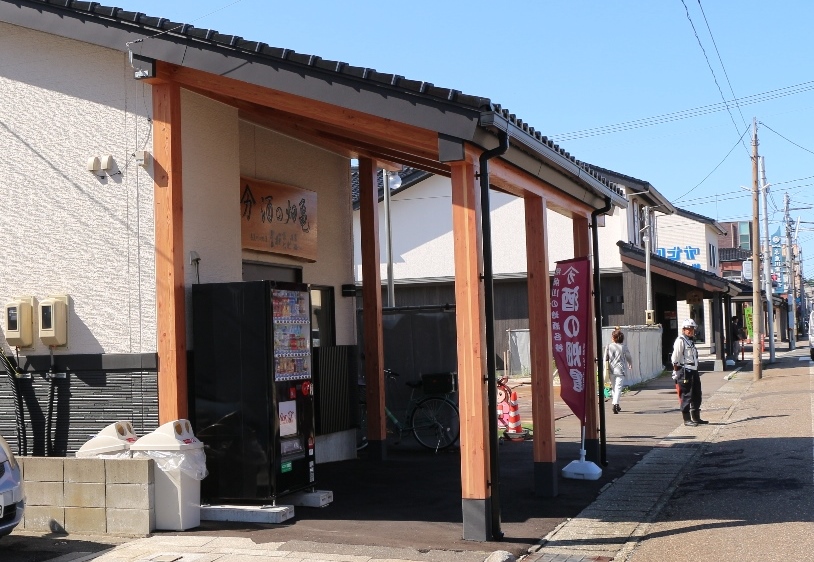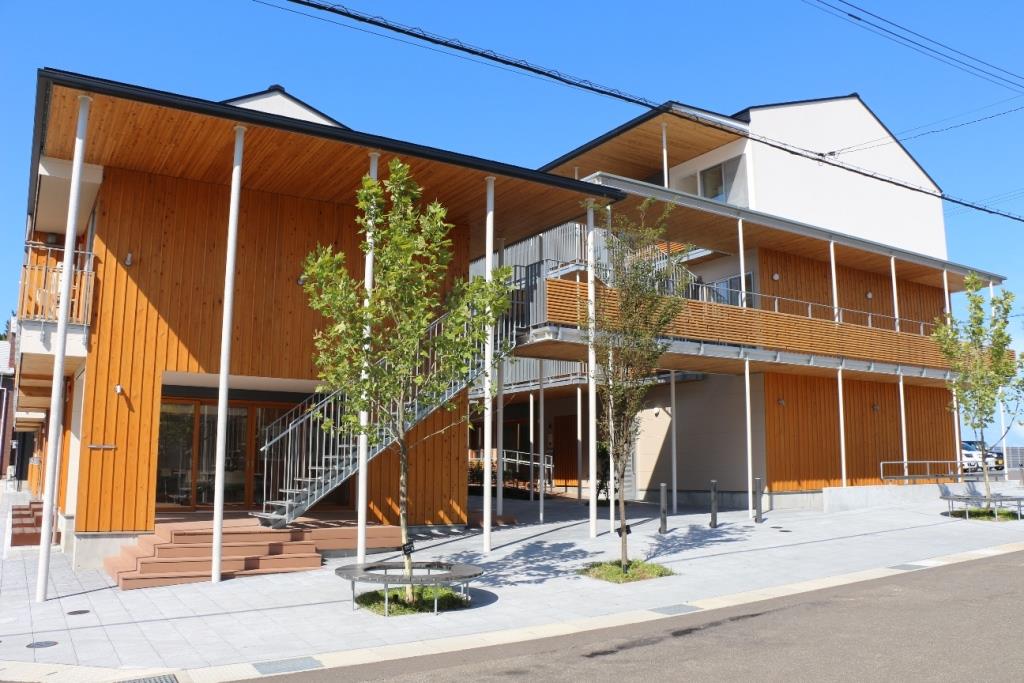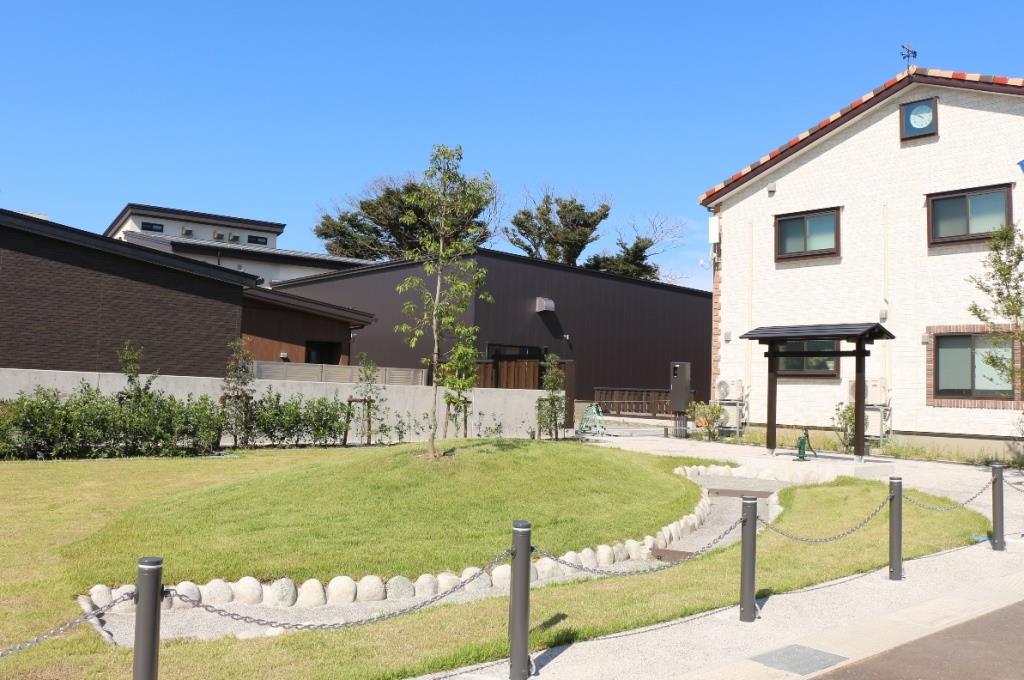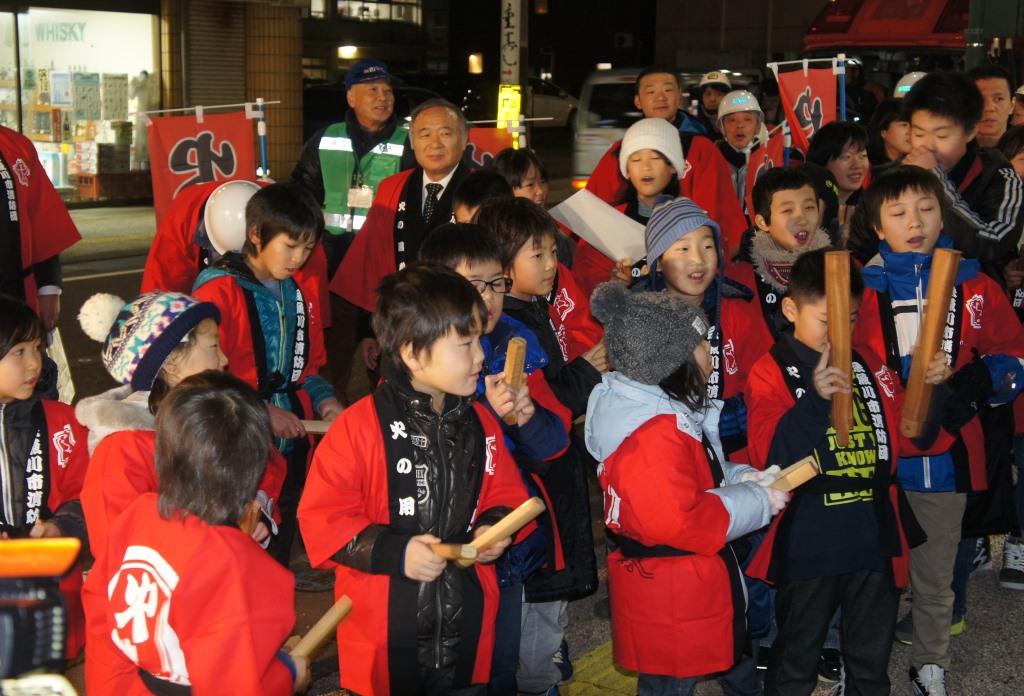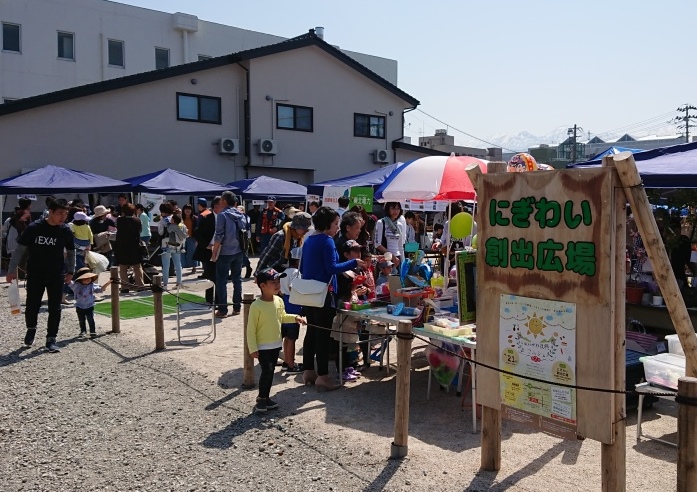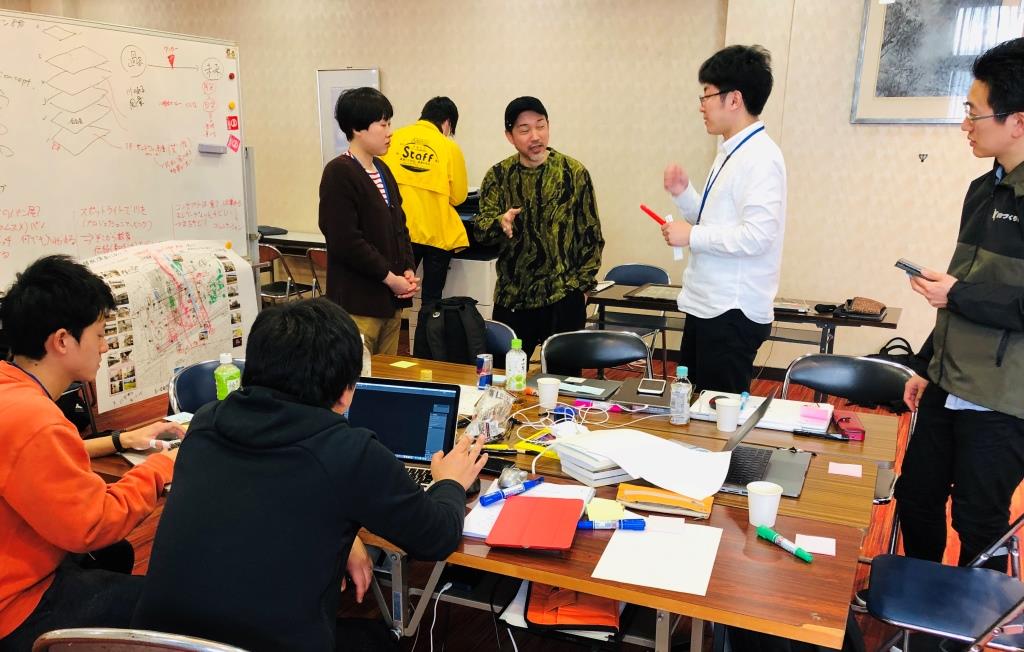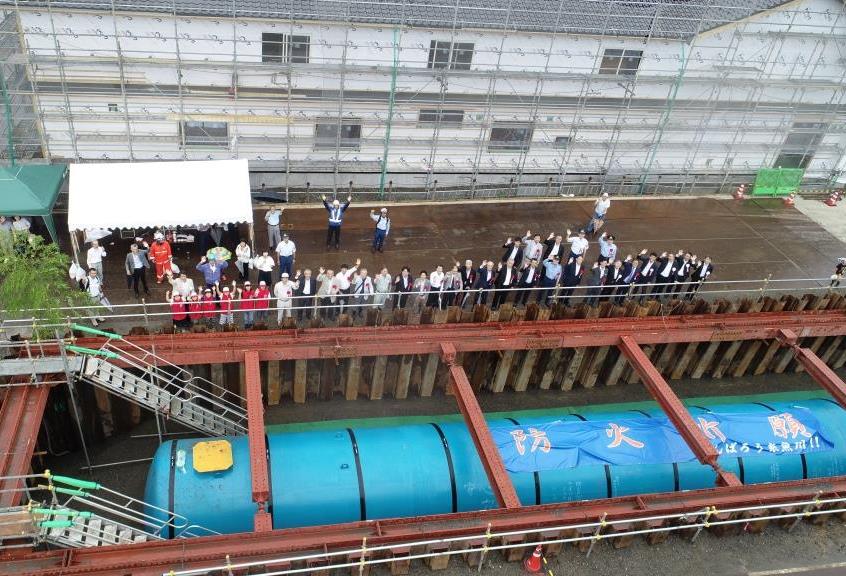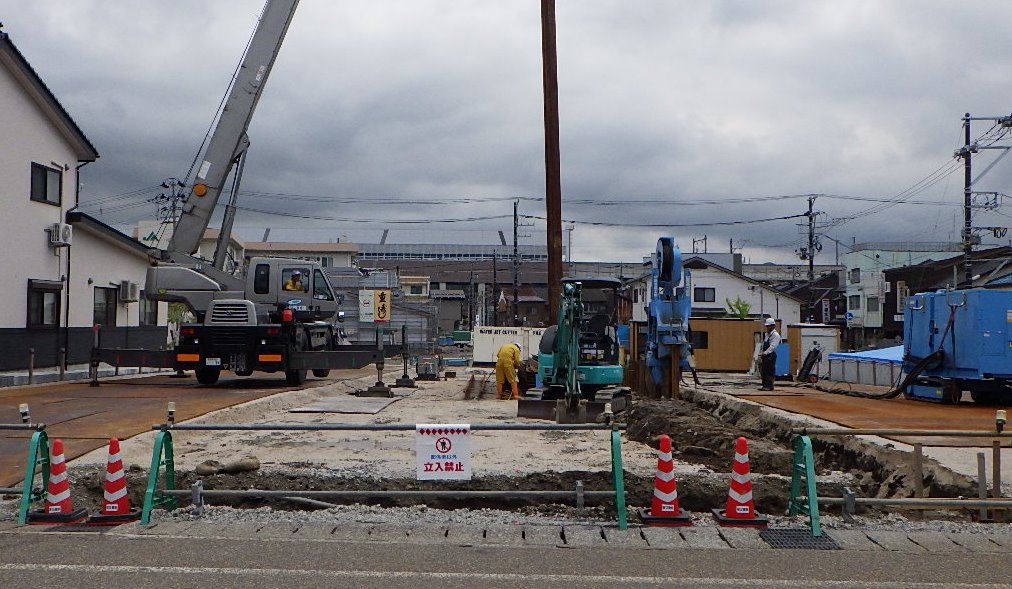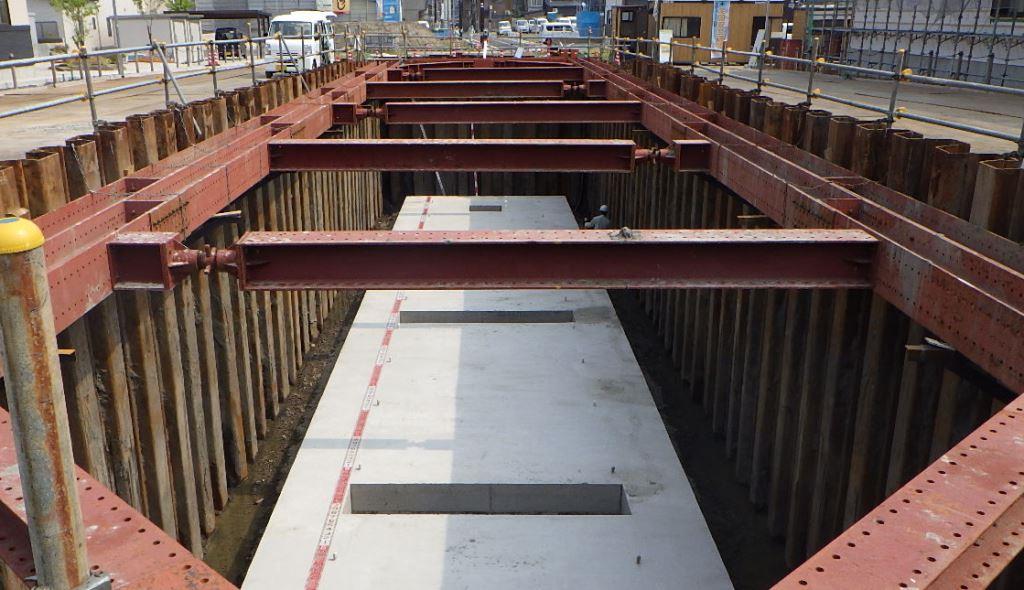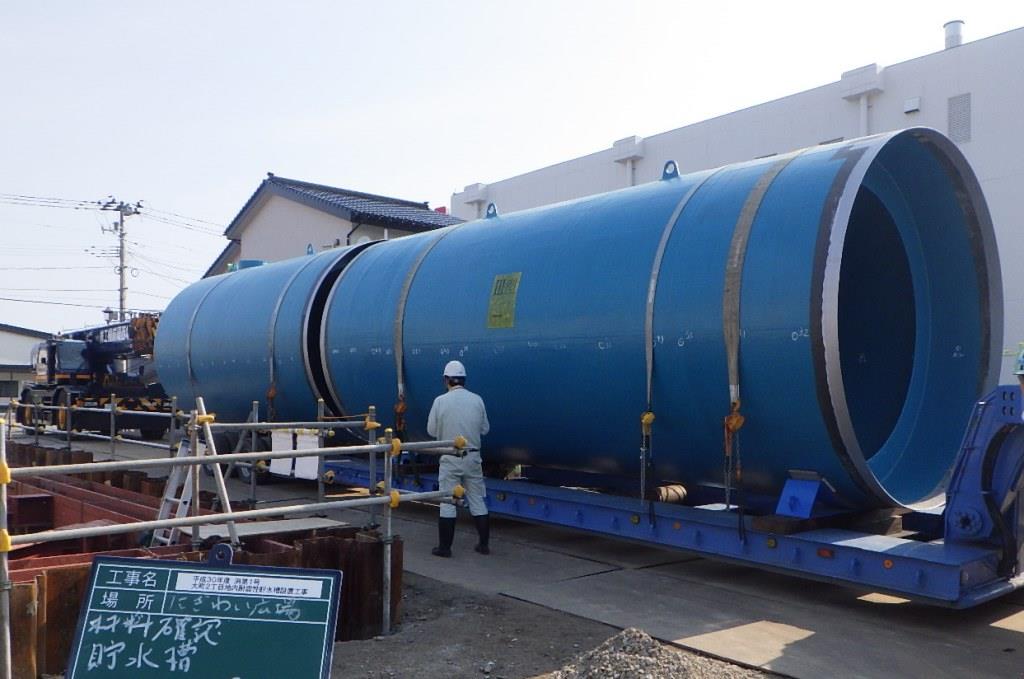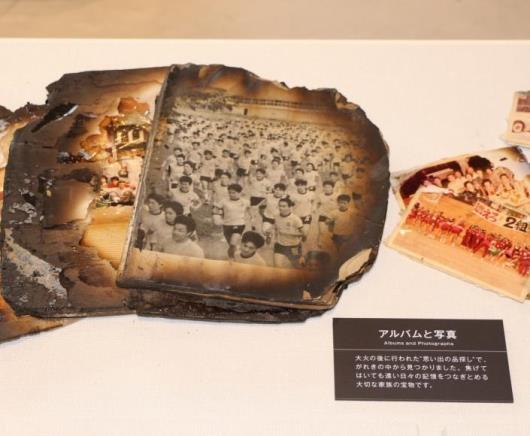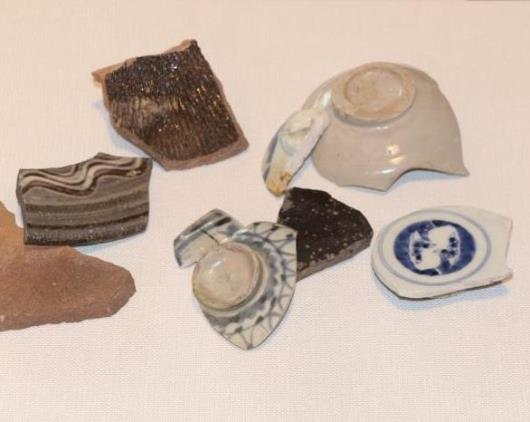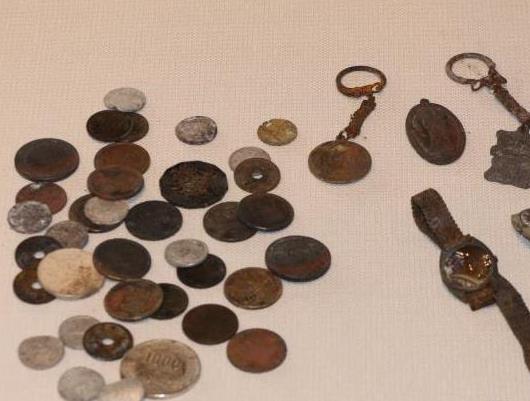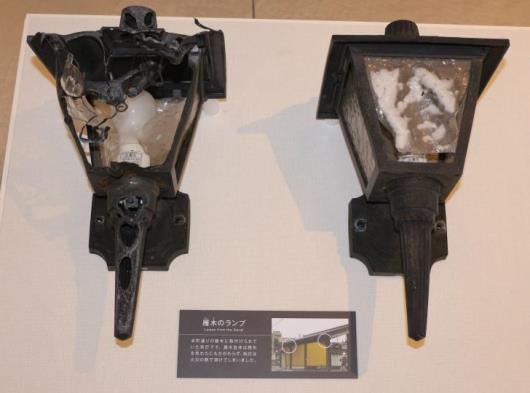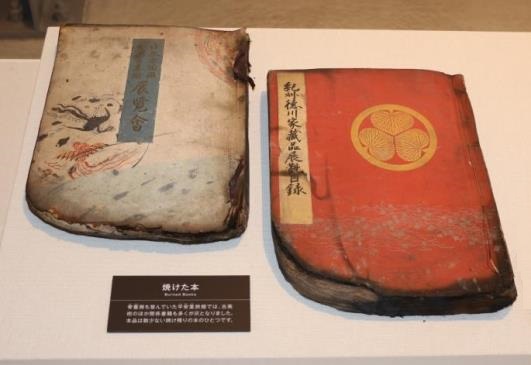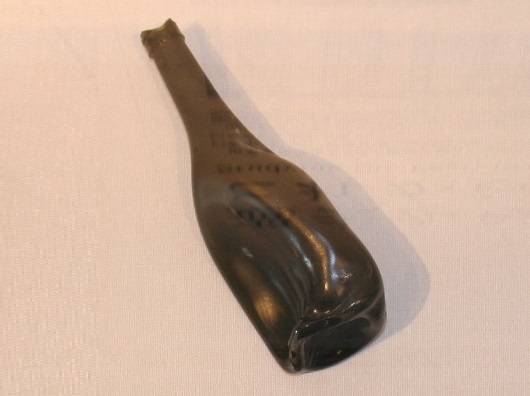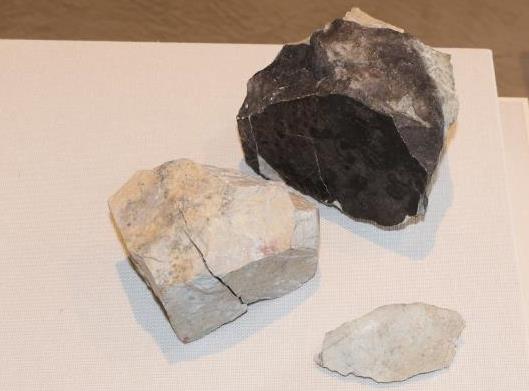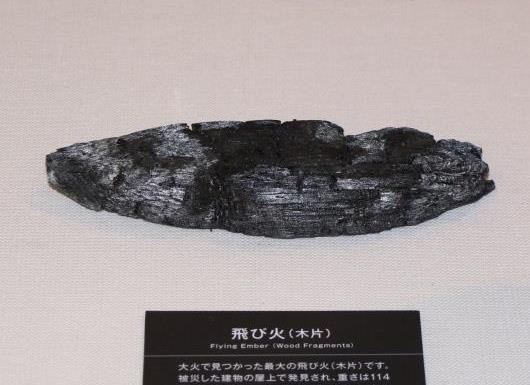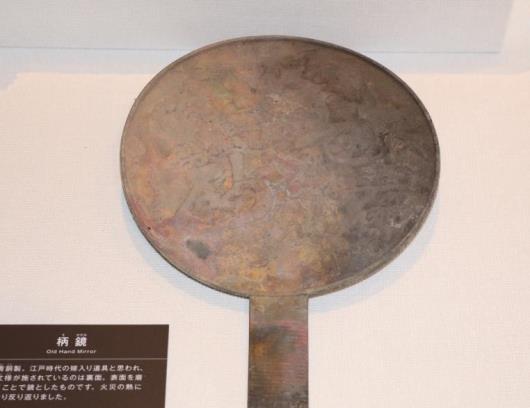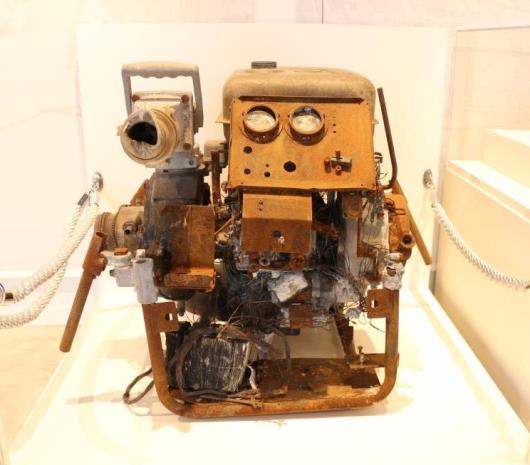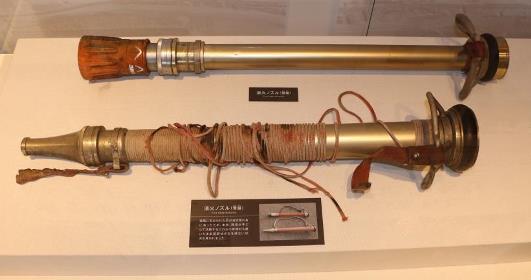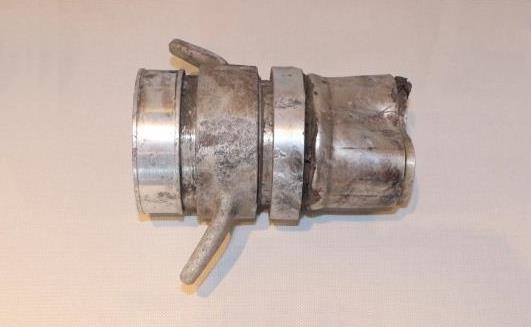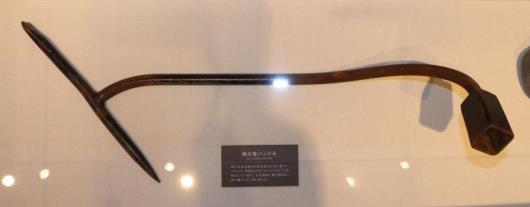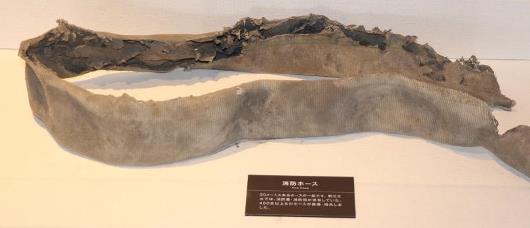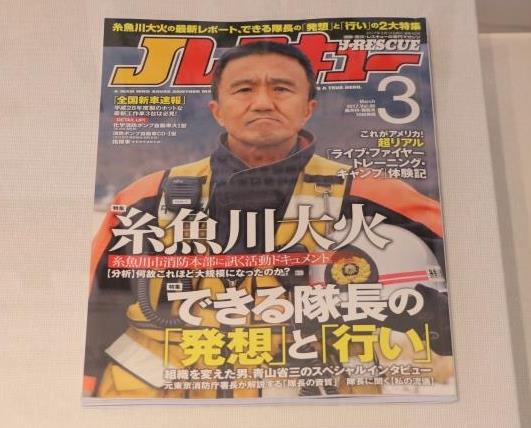本文
Records of the Itoigawa Station North Great Fire
Explanation of Banners
→Explanation of Relics is here
Outline(Forever Engraved on Our Hearts)

A fire which started in a ramen shop in Ōmachi 1-chōme spread quickly as embers flew on strong southerly foehn winds, becoming the largest urban fire since September 1976's Great Fire of Sakata City, Yamagata.
Flames arc across historic Honchō-dōri Street, drawing nearer to the firefighters.
Flames rise higher than the 3 story buildings. Firefighters struggle to control the blaze.
Residents watch with trepidation as cement mixers bring water to help combat the blaze.
As many as 300 firefighters from neighboring regions rush to help extinguish the unprecedented fire.
After 30 hours the fire is extinguished, but the damage is great―spreading like a fan toward Route 8.
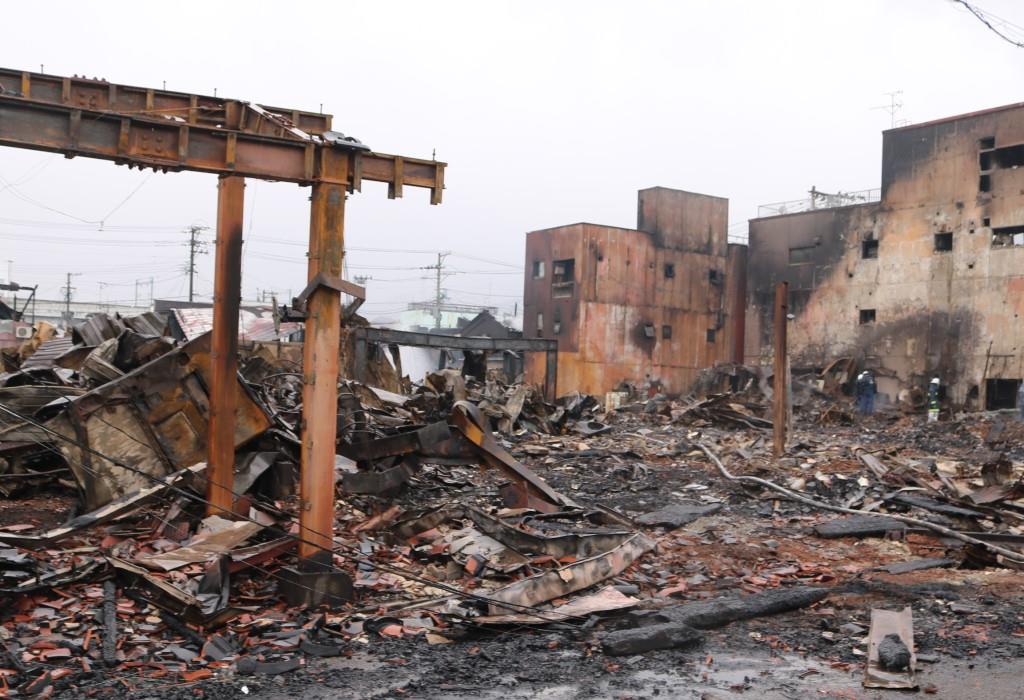
Honchō-dōri after the fire. Steel beams and burnt-out concrete buildings tell the story of the fire's terrible extent.
Cause of the Fire(Geological Factors Contributing to the Fire)
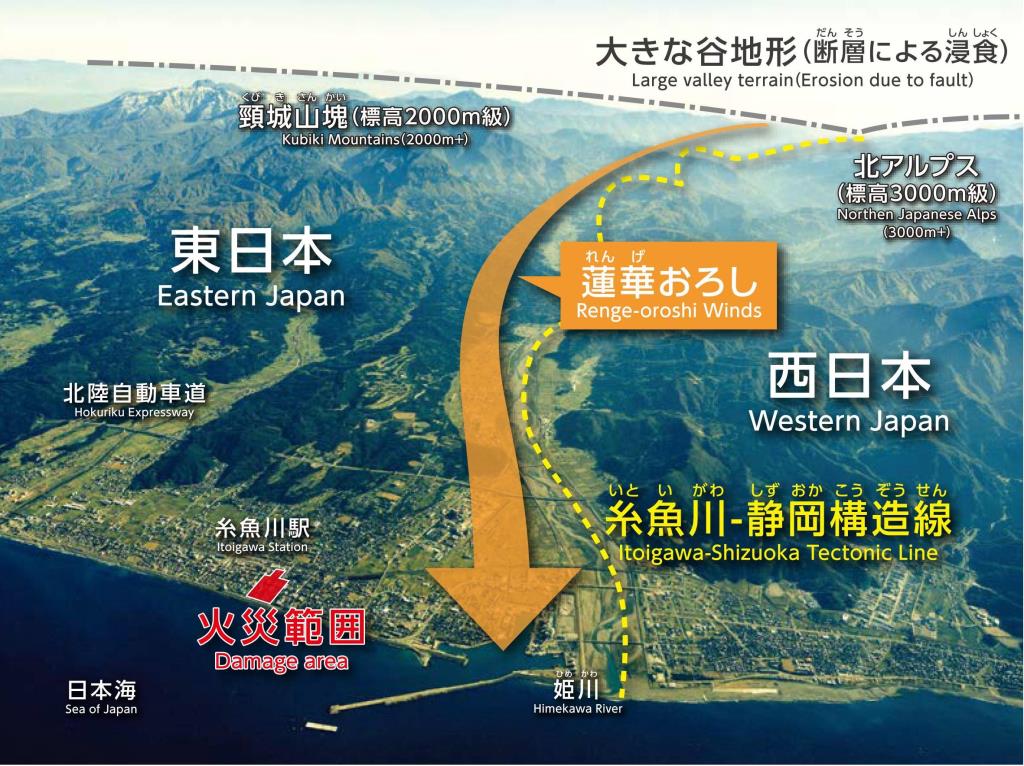
In Itoigawa, strong southerly winds locally called the "Renge-oroshi" have long been known to blow from the mountains. These winds which caused the fire to spread are actually closely connected to Itoigawa's landscape and geology.
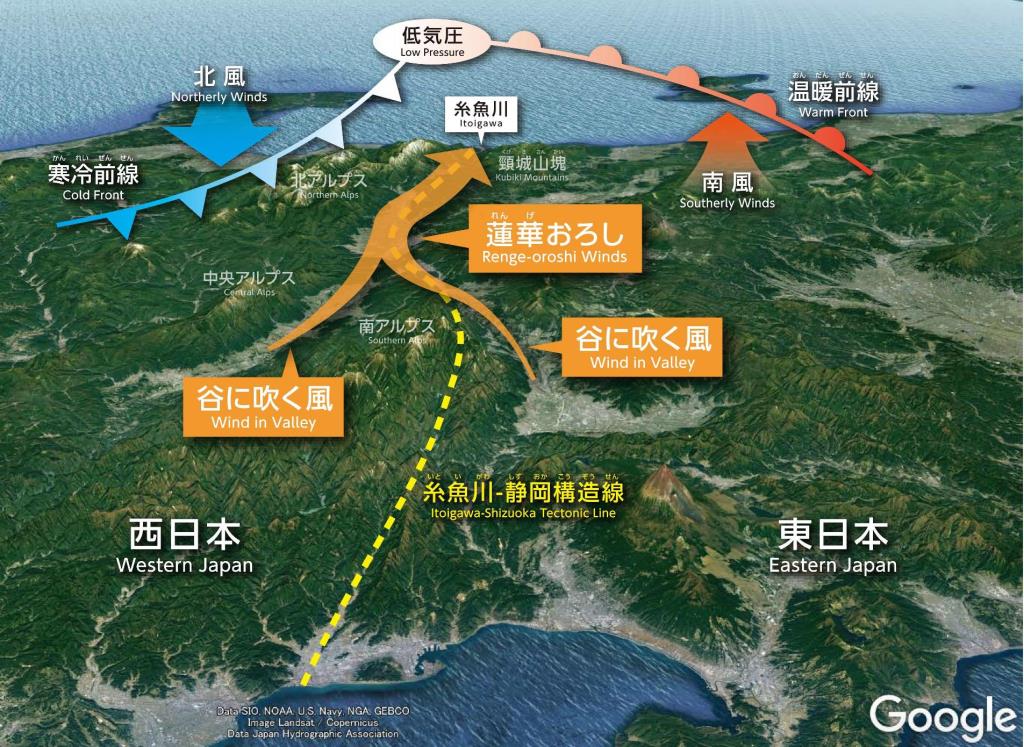
A massive fault called the Itoigawa-Shizuoka Tectonic Line runs through Itoigawa to the opposite side of Japan, splitting it between east and west. Activity along the fault causes the land to collapse easily, forming large valleys which the Himekawa River flows through.
On the day of the fire, an area of low atmospheric pressure formed over the Sea of Japan and southerly winds blew toward the accompanying warm front. These winds, called “Renge-oroshi,” blew through the valleys along the Himekawa River toward Itoigawa, contributing to the fire’s spread.
History of Fires in Itoigawa(Studying the Past,Preparing for the Future)
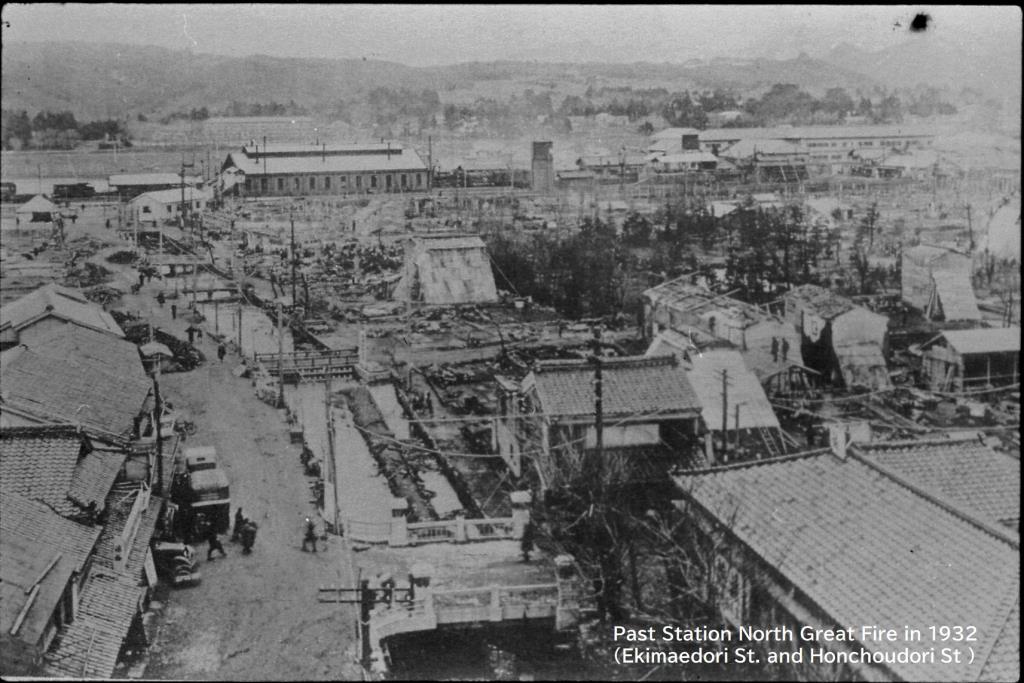
Itoigawa has a long history of fires, with 13 major fires recorded since 1777. Each of these were spread by strong winds, but casualties were always very low. Perhaps this long history of fires has left the local people well-prepared for such disasters.
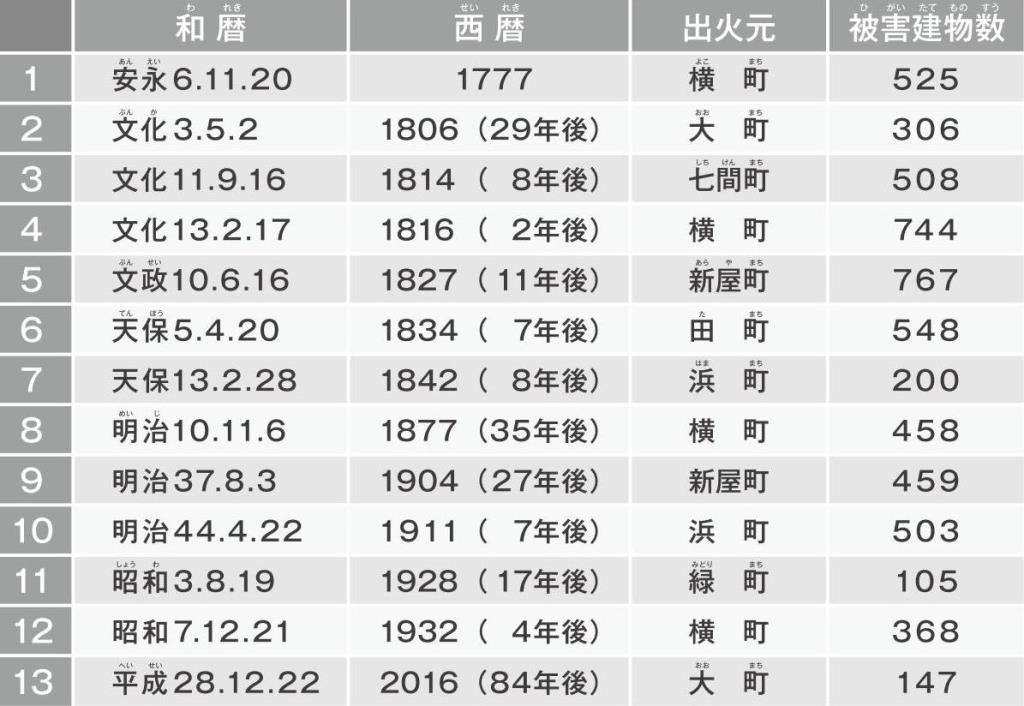
Like many old inn towns along the Sea of Japan, Itoigawa has a long history of fires. These fires were spread by strong westerly winds.
Itoigawa grew mostly along the old Kaga and Matsumoto Roads and fires mostly spread on westerly winds. When Itoigawa Station was built in 1912, the city grew and fires spread by southerly winds became more common.
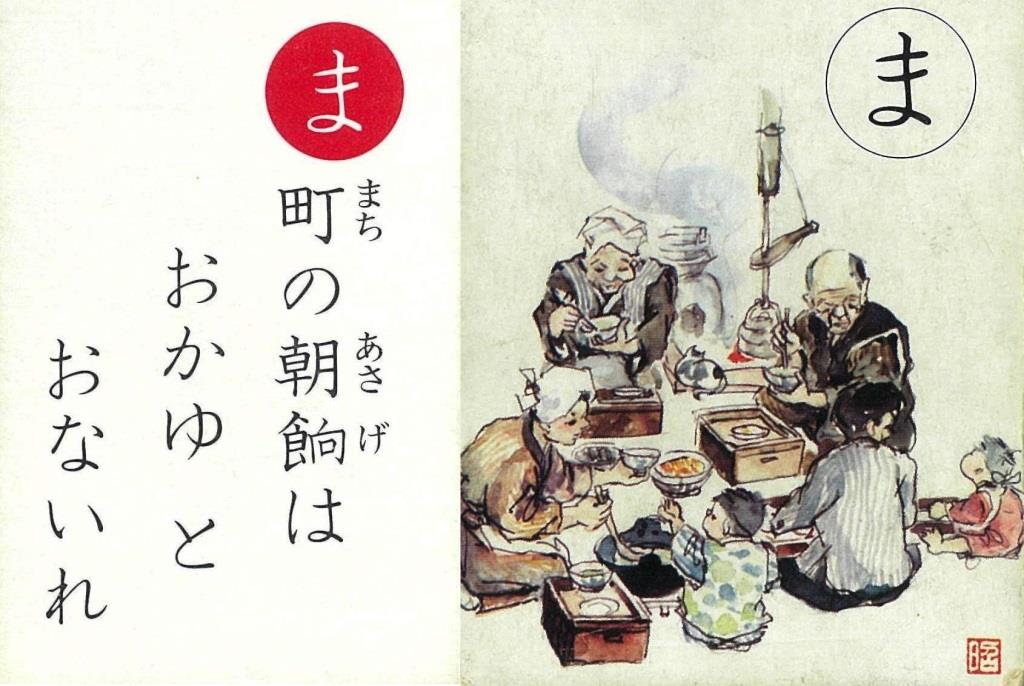
To prepare for disasters, the locals used to prepare breakfast the night before. This way they would have food even if they had to leave at night.
It's no coincidence that Akiba and Yamanoi Shrines sit upwind on the south and west edges of Old Itoigawa. We, too, should think about how we use and place our parks and waterways.
Gingko trees retain water, so they were once used as natural firewalls, like in this picture of Itoigawa Station from the late 1950s.
The gangi of Honchō-dōri have been rebuilt many times, proof of their value to the local people.
Recovery(Overcoming Disaster,Building a New Town)
A goal of the Station North Recovery Town Development Plan was to make an "Itoigawa of Happy Faces Reborn Through Strong Bonds," so it was decided that the rebuilt town would maintain Itoigawa's unique character while being strong enough to prevent large fires from happening again.
The roads are open, but rubble is left undisturbed so volunteers can work to search for lost valuables.
The rubble is cleared and land is surveyed for reconstruction. In only 1.5 years, the town is mostly rebuilt.
Buildings along Honchō-dōri are made fire-resistant. Gangi arcades are rebuilt to preserve the town's original appearance.
Some chose not to rebuild, so the new Recovery Municipal Housing was built for them.
To not only beautify the town, but also prevent fire spread and provide evacuation space, 8 new parks have been built.
Toward the Future(Growing with Our Town)
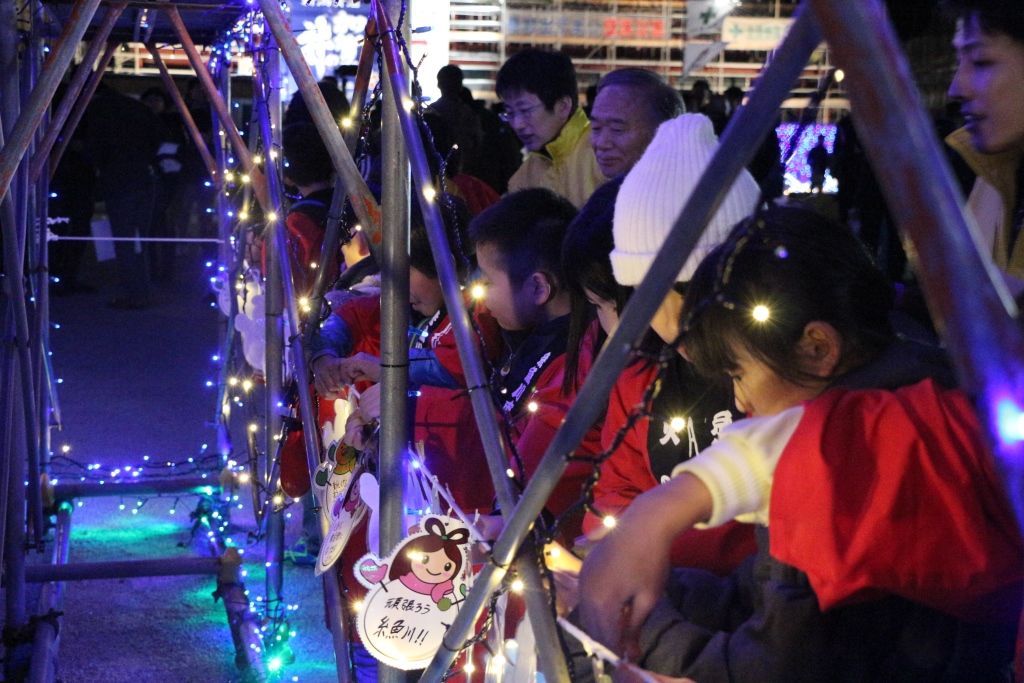
We will continue to work together toward building an enjoyable and vibrant "Station North Area" as the heart of our town, while passing the memories and lessons of the fire to future generations.
Residents and children gather on the anniversary of the fire to remember the fire and remind the entire community of fire safety.
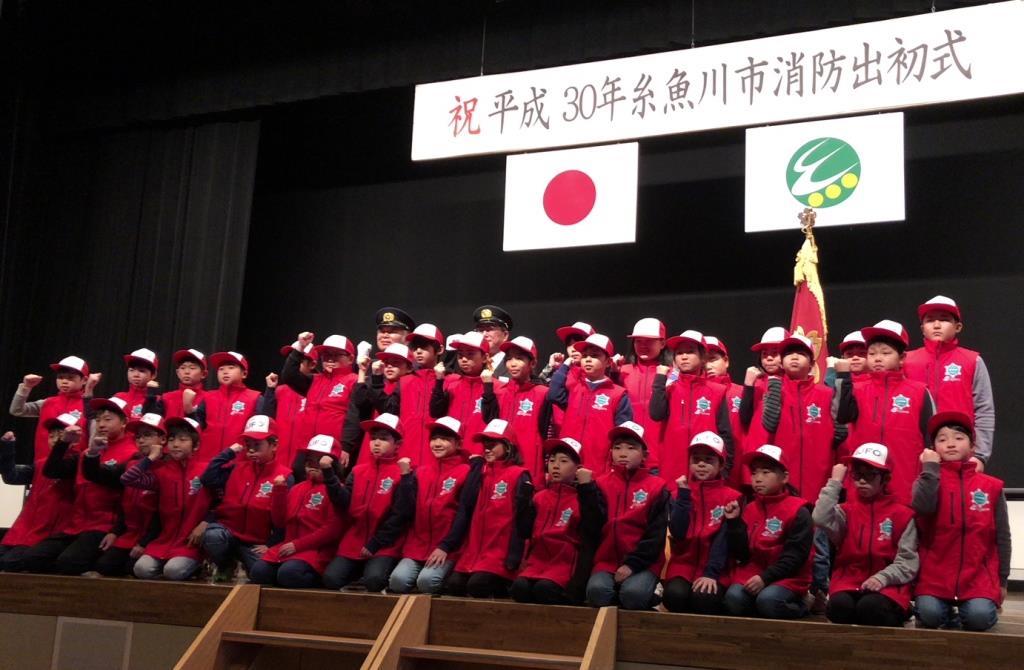
Itoigawa City launches the Children's Fire Brigade. These children take part in regular drills and activities to become tomorrow's leaders in disaster reduction.
The Station North Square is used as the site for the Recovery Marche, a bazaar organized by local banks and business owners to breathe life back into the area.
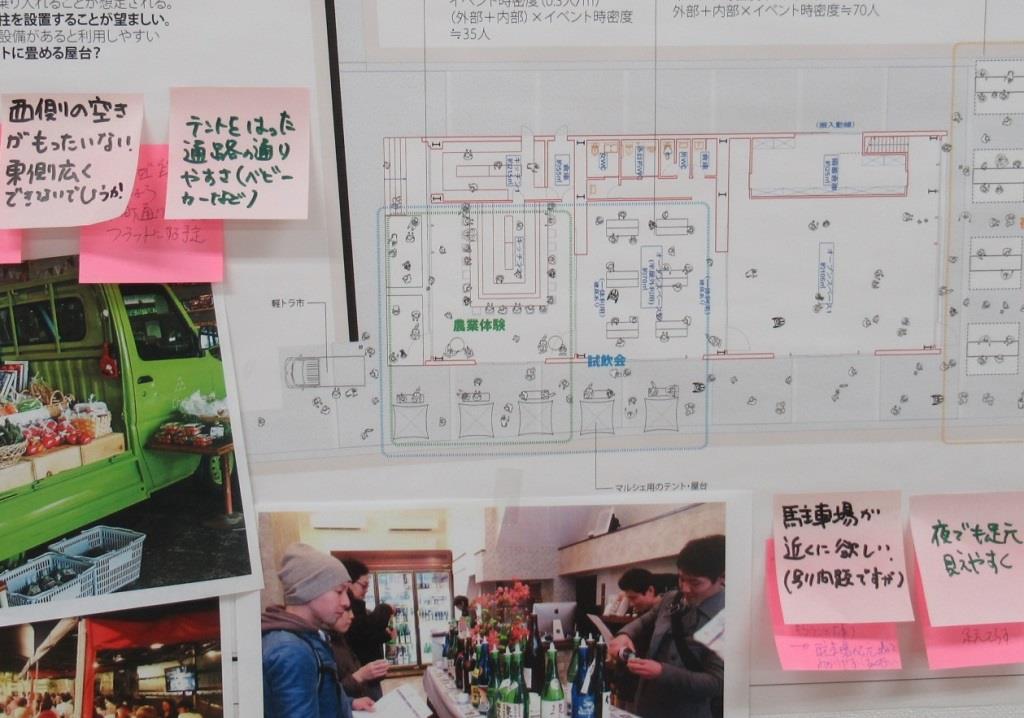
Young people and local organizations make plans for how to develop and use the new Station North Square.
Plans and ideas are exchanged for how to make use of empty houses and lots to improve regional value.
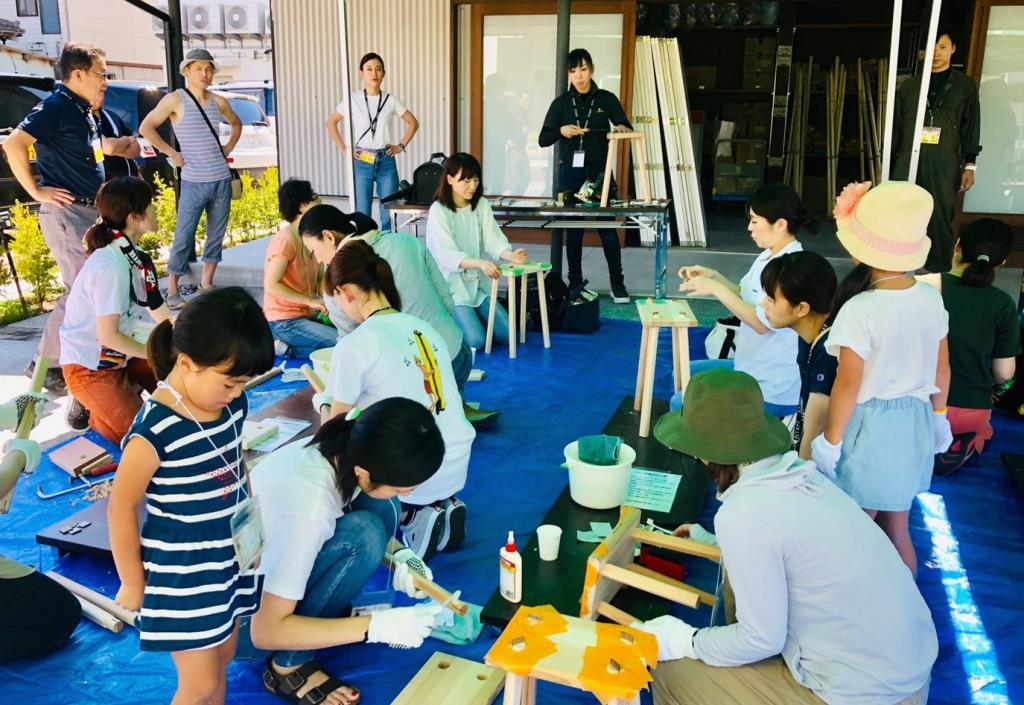
Local residents take part in building the new park benches and play equipment to foster a sense of love for the community.
Fire Cistern (Earthquake Resistant.200t)
Below the Station North Square is a 200 ton fire cistern, one of the largest in Japan. It is a necessary measure taken to protect the densely packed wooden buildings in this area and to carry the memory of the fire into the future.
1.Clearing a space
An 11 m deep hole carefully excavated for the cistern. Steel plates prevent the sides from collapsing.
2.Installing support structures
A 20 cm deep gravel bed is laid while steel girders and concrete are used to support the structure.
3.Lowering in the cistern
The 27 m x 3 m cistern is brought in in 4 pieces. The cistern is made of steel, but it looks blue due to a protective coating from a material called FRP.
4.Filling and covering
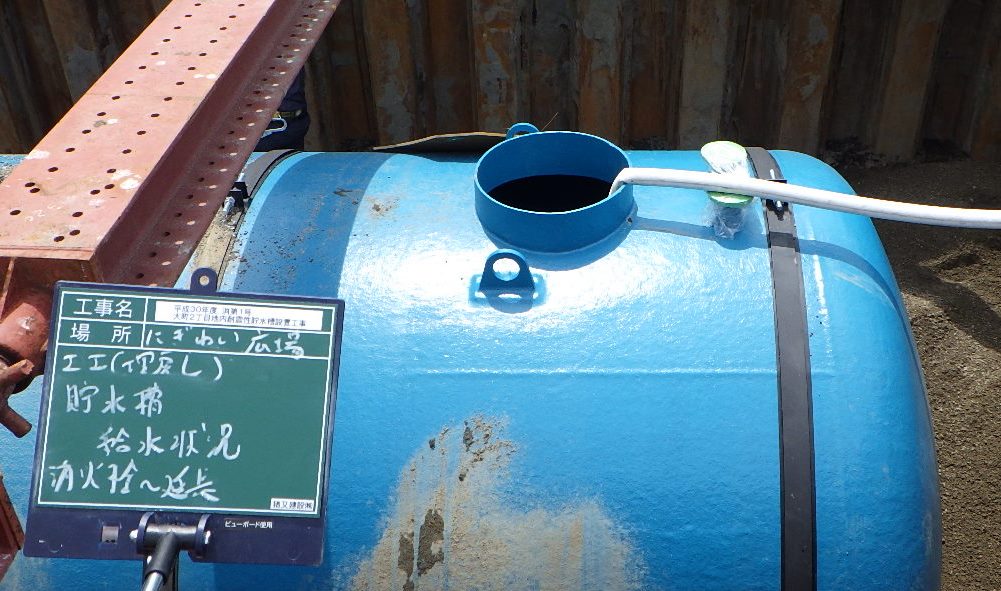
The cistern is filled with water so it will not move when the hole is refilled. The black belts keep the cistern fastened to the surrounding support structure.
Explanation of Relics
Albums and Photographs
These albums & photographs were found amongst the rubble. Though burnt, they represent irreplaceable memories.
Relics of Former Great Fires
While surveying the Station North Square, relics from past great fires were uncovered. The old town had been built atop the memories of these past fires.
Coins and Wristwatch
Because one yen coins are made of aluminum they melt very easily, as you can see here. The wristwatch's face is too badly damaged to read the time.
Lamp from the Gangi
Unique elongated eaves called gangi lined the storefronts of Honcho-dori. Even where the gangi were spared by the fire, the lamps were melted in the fire's heat.
Burned Books
Heiandō Ryokan also operated as an antique dealer, hosting a large collection of antique artwork and books, most of which were lost in the fire. This is among the few that survived.
Melted Sake Bottle
This 720 ml sake bottle from Itoigawa’s oldest brewery, Kaga-no-I Brewery, had not yet been filled with sake when the heat from the fire warped it into this shape.
Burned Jade
This jade was displayed in a local soba restaurant Izumiya for customers to appreciate. The intense heat of the fire has bleached the once beautiful green color and cracked the surface.
Flying Ember (Wood Fragments)
This is the largest of the flying embers (wood fragment) seen in the fire. This 114 gram fragment was discovered atop a roof. Smaller embers flew over 100 meters on the wind, contributing to the fire's fast spread.
Japanese Sword
Made in 1855 my local swordsmith Fujiwara Hiroshige, this sword was a Municipal Important Cultural Property until the fire. Heat, shock and days of exposure to the elements have irreparably damaged it.
Old Hand Mirror
This bronze hand mirror is thought to have been a wedding present from the Edo Period. Decorated on the back, the front was polished for use as a mirror. It's been badly warped by the heat of the fire.
Firefighting Pump
With winds gusting to typhoon strangth, field command and firefighters alike were forced to constantly change plans. As the fire spread, much of the machinery could not be moved in time and was lost to the blaze.
Fire Hose Nozzles
Nozzles like this are held by firefighters as they work, but the flames grew and spread so rapidly that, like much of the equipment, they could not be evacuated in time.
Water Suction Hose
These metal fittings, warped by heat and debris, are all that remain of a 6 meter rubber suction hose used with the firefighting pump.
Fire Hydrant Handle
Handles like this are used to open underground fire hydrants. Usually shaped like the letter 'T,' it was left behind and warped by the heat of the blaze.
Fire Hose
This is part of what was a 20-meter-long fire hose. Over 400 such hoses were either lost or damaged while fighting the fire.
Firefighters Journal
The Station North Fire was covered by a number of television networks, journals, and other media. This coverage helped Itoigawa receive support from all over the country.
(Pictured on front is the Vice Fire Chief of the time)



